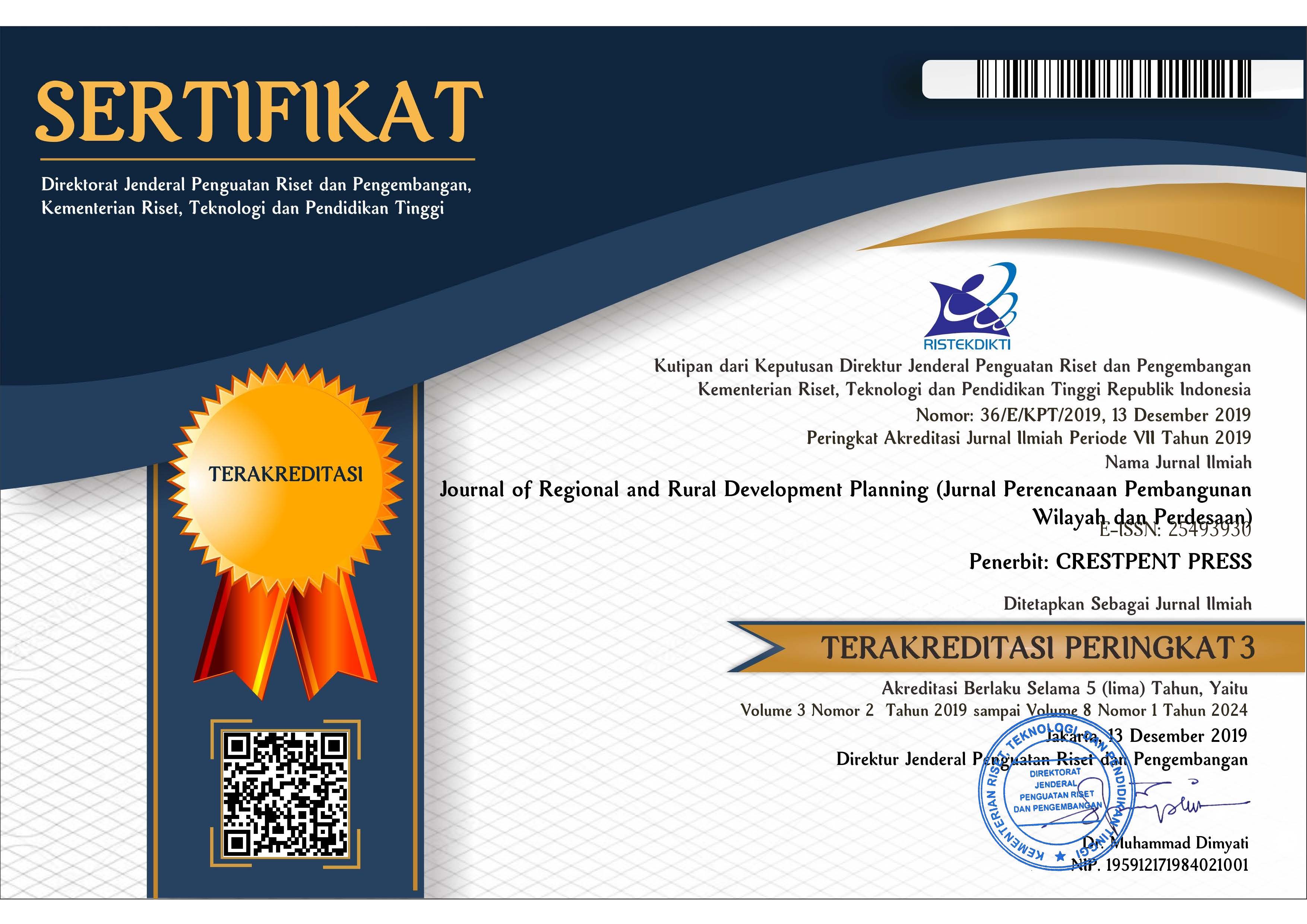Ketersediaan Data dalam Mendukung Smart City Readiness di Kota Surakarta
Abstract
Data Availability in Supporting Smart City Readiness in Surakarta City
The smart city concept is one of the developing concepts in overcoming various urban problems. The concept must be supported by mature implementation guidelines. The preparation of smart city guidelines is based on the readiness of each region. The readiness measurement is carried out with smart city readiness measurements that have been developed by several experts. This study will use compilation of several smart city readiness measurement models to measure smart city readiness in Surakarta City, in order to understand data required and available in Surakarta City Government, data required and available outside Surakarta City Government, and data required but not yet provided by both the City Government and other agencies. The method used in this study is case study with a qualitative approach. Measurement results show that the availability of data and the quality of available data in Surakarta City is quite good. This shows that Surakarta City is ready to develop the smart city concept to overcome various city problems faced.
References
Azim, A. Z. & Aghajani, R. (2014). Designing Smart City. Indian Journal of Fundamental and Applied Life Sciences, 4 (S3), 146–153.
Bakici, T., Almirall, E., & Wareham, J. (2013). A Smart City Initiative: the Case of Barcelona. Journal of the Knowledge Economy, 4 (2), 135–148.
Caragliu, C. D. (2011). Smart Cities in Europe. Journal of Urban Technology, 18 (2), 65–82.
Citiasia Center for Smart Nation. Smart Nation: Mastering Nation's Advancement from Smart Readiness to Smart City. Jakarta.
Cohen, Daniel, A., & Zarowin, P. (2010). Accrual-Based and Real Earnings Management Activities Around Seasoned Equity Offerings. Journal of Accounting & Economic, 50 (1), 2–19.
Dada, D. (2007). E-Readiness for Developing Countries: Moving the Focus from the Environment to the Users. The Electronic Journal of Information Systems in Developing Countries, 27 (6), 1–14.
Harrison, C., Eckman, B., Hamilton, R., & Hartswick, P. (2010). Foundations for Smarter Cities. IBM Journal of Research and Development, 54 (4), 1–16.
Insani, P. A. (2017). Mewujudkan Kota Responsif melalui Smart City. PUBLISIA: Jurnal Ilmu Administrasi Publik, 2 (1), 25–31.
Dewi, M. A. A. D., Hidayanto, A. N., Purwandari B., Kosandi, M., & Budi, N. F. A. (2018). Smart city Readiness Model Based on Technology Organization Environment (TOE) Framework and its effect on adoption decision. Paper presented at the Twenty-Second Pacific Asia Conference on Information Systems, Japan.
Molla, A. & Licker, P. (2005). Perceived E-Readiness Factors in E-Commerce Adoption : An Empirical Investigation in a Developing Country. International Journal of Electronic Commerce, (10) 1, 83–110.
Mursalim, S. W. (2017). Implementasi Kebijakan Smart City di Kota Bandung. Jurnal Ilmu Administrasi, 14 (1), 126–138.
Smart City Council. (2013). Smart City Readiness Guide. Seattle.
Smart City Summit. (2016). The smart city checklist: 10 steps to smart city readiness. Chicago.
Tampubolon, L. P. D. (2016). Pemeringkatan E-Government Indonesia (PEGI) dan Pemanfaatan Teknologi Informasi di DKI Jakarta. JSI: Jurnal Sistem Informasi, 8 (2), 1121–1132.
Utomo, C. E. W. & Hariadi, M. (2016). Strategi Pembangunan Smart City dan Tantangannya bagi Masyarakat Kota. Jurnal Srategi dan Bisnis, 4 (2), 159–176.
Copyright (c) 2020 Journal of Regional and Rural Development Planning (Jurnal Perencanaan Pembangunan Wilayah dan Perdesaan)

This work is licensed under a Creative Commons Attribution-ShareAlike 4.0 International License.




.png)














